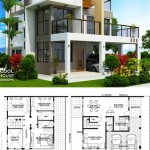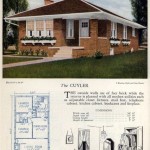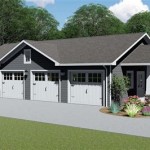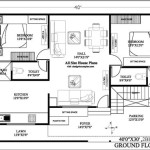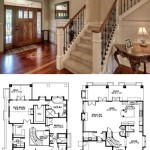Floor Plans For A Two Story House: Maximizing Space and Functionality
A two-story house offers a significant advantage in terms of space and design versatility compared to single-story dwellings. Understanding the various floor plan options available is crucial for prospective homeowners and those considering renovations. This article explores key considerations and common layouts for two-story house floor plans, focusing on maximizing space, functionality, and lifestyle integration.
Understanding Zoning in Two-Story House Floor Plans
One of the primary benefits of a two-story house is the inherent separation of living spaces. Floor plans typically utilize a zoning approach, dividing the house into distinct functional areas. This separation enhances privacy, reduces noise transmission, and contributes to a more organized and comfortable living environment. Common zoning strategies include:
Public vs. Private Zones: Ground floors are often designated as public areas, encompassing spaces such as the living room, dining room, kitchen, and potentially a home office or study. Upper floors are then reserved for private areas, including bedrooms, bathrooms, and often a secondary living space or recreation area. This arrangement concentrates social activity on the lower level, while promoting rest and relaxation on the upper level.
Active vs. Quiet Zones: Another zoning strategy considers activity levels. Areas with high foot traffic and potential noise, such as the kitchen and entryway, might be placed away from quieter areas like bedrooms or a home office. This is particularly important in open-concept designs where noise can easily travel throughout the ground floor. Incorporating noise-reducing building materials and thoughtful furniture placement can further mitigate sound transmission.
Service vs. Living Zones: Utility areas like the laundry room, mudroom, and garage access are generally grouped together on the ground floor, often located near the kitchen for convenience. This creates a dedicated service zone that supports the daily functioning of the house without disrupting the primary living spaces.
Careful consideration of zoning principles during the floor plan design process is essential for creating a harmonious and functional two-story house. The specific allocation of space will depend on the homeowner's lifestyle, family size, and individual preferences.
Common Two-Story House Floor Plan Layouts
Numerous floor plan layouts are available for two-story houses, each with its own advantages and disadvantages. Understanding these layouts allows homeowners to identify the options that best suit their needs.
Traditional Layout: This layout typically features a formal living room and dining room at the front of the house, separated from the kitchen by a hallway or wall. The upper floor houses the bedrooms and bathrooms. This design offers a high degree of separation between spaces and is well-suited for those who prefer distinct rooms for different activities.
Open-Concept Layout: This increasingly popular layout combines the living room, dining room, and kitchen into one large, open space. This creates a sense of spaciousness and encourages social interaction. Open-concept layouts are ideal for families who enjoy spending time together and entertaining guests. However, careful consideration must be given to noise control and visual clutter, as these can become challenges in a large, open space.
Split-Level Layout: While technically not always two-story, split-level houses often share characteristics and design considerations with two-story homes. This layout features multiple levels connected by short flights of stairs. Split-level designs can be advantageous on sloping lots, allowing for efficient use of the land. They can also provide a greater degree of separation between living spaces compared to traditional two-story layouts.
Cape Cod Layout: This style typically features a smaller footprint with a simple rectangular shape. The upper floor is often partially under the roofline, creating angled ceilings and dormer windows. Cape Cod homes offer a cozy and charming aesthetic and are well-suited for smaller lots.
Modern Layout: Modern floor plans often incorporate elements of open-concept design with clean lines, minimalist aesthetics, and a focus on maximizing natural light. They may feature large windows, open staircases, and flexible living spaces that can be easily adapted to different uses.
The choice of layout will depend on factors such as the size of the lot, the desired level of privacy, and the homeowner's lifestyle. Consulting with an architect or designer is recommended to determine the optimal layout for a specific project.
Key Considerations for Two-Story House Floor Plans
Designing a functional and aesthetically pleasing two-story house floor plan requires careful consideration of several key factors. These considerations extend beyond the basic layout and encompass aspects such as circulation, natural light, and energy efficiency.
Staircase Design and Placement: The staircase is a prominent feature in a two-story house and its design and placement can significantly impact the overall flow and aesthetics of the home. The staircase should be easily accessible from the main living areas and should comply with local building codes regarding width, riser height, and handrail requirements. The staircase design can range from a simple straight run to a more elaborate curved or spiral staircase. The choice of materials and finishes can also contribute to the overall design aesthetic. Strategic placement of the staircase can also help to define different zones within the house.
Natural Light and Ventilation: Maximizing natural light and ventilation is crucial for creating a comfortable and healthy living environment. Floor plans should be designed to take advantage of natural light sources, such as windows and skylights. Window placement should be carefully considered to optimize solar gain in the winter and minimize heat gain in the summer. Natural ventilation can be enhanced by incorporating operable windows and strategically placed ventilation shafts. Proper ventilation helps to reduce humidity and improve indoor air quality.
Accessibility and Aging in Place: As the population ages, accessibility considerations are becoming increasingly important in house design. Floor plans should be designed to accommodate individuals with mobility limitations. This may involve incorporating features such as wider doorways, ramps, and grab bars in bathrooms. A bedroom and bathroom on the ground floor can provide an option for single-level living in the future. Planning for accessibility early in the design process can help to ensure that the house remains functional and comfortable for all residents throughout their lives.
Energy Efficiency: Energy efficiency is a critical consideration for any house design. Two-story houses can be particularly susceptible to heat loss and gain due to their large surface area. Floor plans should be designed to minimize energy consumption by incorporating features such as proper insulation, energy-efficient windows, and efficient heating and cooling systems. The orientation of the house can also impact its energy efficiency. Designing the house to take advantage of passive solar heating and cooling can significantly reduce energy bills.
Storage Solutions: Adequate storage is essential for maintaining a clutter-free and organized living environment. Floor plans should incorporate ample storage space, including closets, cabinets, and shelving. Consider incorporating built-in storage solutions to maximize space efficiency. Basements and attics can also provide valuable storage space. The placement of storage areas should be carefully considered to ensure that they are easily accessible and convenient to use.
By carefully considering these key factors, it is possible to create a two-story house floor plan that is both functional and aesthetically pleasing. Consulting with an experienced architect or designer is highly recommended to ensure that the floor plan meets the specific needs and preferences of the homeowner.
In addition to the above, it's important to consider the orientation of the house on the lot. South-facing windows can maximize solar gain in colder climates, while strategically placed trees can provide shade in warmer climates. The local climate and environmental conditions should be taken into account when designing the floor plan.
Furthermore, future expansion possibilities should be considered. Can the attic be finished into living space? Is there room to add an addition onto the back of the house? Planning for future growth can add value and flexibility to the home.
Ultimately, the ideal two-story house floor plan will depend on a variety of factors, including the homeowner's budget, lifestyle, and preferences. By carefully considering all of these factors, it is possible to create a home that is both functional and beautiful.
The process of designing a two-story house floor plan is complex and requires a thorough understanding of architectural principles, building codes, and homeowner needs. Engaging with qualified professionals, such as architects and interior designers, can significantly enhance the outcome and ensure a successful and satisfying living space.

Unique Simple 2 Story House Plans 6 Floor Two Cape Ranch Style

Custom 2 Story Houses New Two Home Plans Housing Development D House Layout Sims Blueprints

Unique Two Story House Plan Floor Plans For Large 2 Homes Desi Family Blueprints Victorian

Unique Two Story House Plan Floor Plans For Large 2 Homes Desi

Simple House Design Plans 11x11 With 3 Bedrooms Full Two Story Double Y Small Floor

Unique Two Story House Plan Floor Plans For Large 2 Homes Desi Container

2 Y House Plans Floor Plan With Perspective New Nor Two Story Cape Ranch Style

Two Story House Plan Examples

2 Story House Plans For Narrow Lots Blog Builderhouseplans Com

2 Level House Plans Distinctive Homes Double Y



